|
Schweizer
Aircraft Corporation During World War Two
Big Flats, NY
1930-2012
1930-1939 - Schweizer Metal Aircraft Company
1939-2004 - Schweizer Aircraft Corporation
2004-2012 - As part of Sikorsky Aircraft Corporation of United
Technologies
This page updated 3-7-2023.
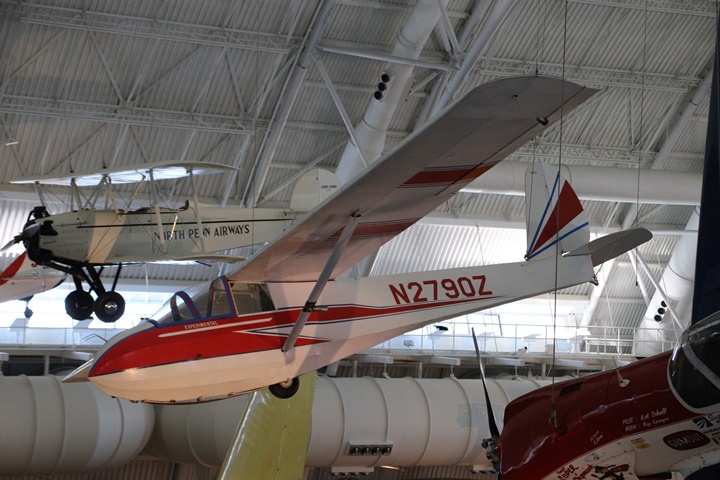
Gliders and Soaring. This is what I
think of when I see the name Schweizer. This SGU-2-22EK on display
at the Udvar-Hazy Center in Chantilly, VA is precisely what I think of
as a Schweizer glider. The 257 examples of the SGU-2-22EK training
glider built between 1946 and 1967 trained a significant number of
soaring students to fly gliders. However, building gliders did not
provide the revenue stream to keep the doors open at the Schweizer
Aircraft Corporation. Starting in World War Two, the company
subcontracted to other companies to produce aviation parts which
continued after the end of the war. The company also purchased the
rights to the Hughes TH-55 helicopter and the Grumman Ag-Cat. In
the end, even these products could not keep the company from being
sold to Sikorsky in 2004 and then being shut down in 2012.
The story of the Schweizer Aircraft
Corporation is really the story of three brothers, Ernst, Paul, and William Schweizer,
who had a passion for aviation and soaring and turned this into a family
business. It is also the story of the elder Schweizers turning
over the business to their sons in the early 1970s.
Ernst, Paul, and William Schweizer built their
first glider in 1930. This was their model SPG 1-1. The
brothers started building gliders under the name Schweizer Metal
Aircraft Company in a barn in Horseheads, NY. In 1939 the brothers
incorporated their company to become the Schweizer Aircraft Company and
moved to Elmira, NY. The company is known for its metal sailplanes
built up through the 1980s at which time fiberglass-built gliders began
to dominate the market.
Schweizer Aircraft Corporation built the
Grumman Ag-Cat under license from 1957 through 1980. During this
period Schweizer manufactured 2,455 Ag-Cats. Grumman held the
design rights and did the sales and marketing of the aircraft while
Schweizer was responsible for the manufacturing. In May1980,
Grumman sold the rights of the Ag-Cat to the Gulfstream Corporation,
which moved all of the production tooling out of Big Flats, NY to
Savannah, GA. It took 32 tractor-trailers to move all of the
equipment to Georgia. However, Gulfstream did not put the Ag-Cat
back into production. In November 1980, Schweizer purchased both
the
design and manufacturing rights of the Ag-Cat business from Gulfstream for
$3,300,000. Once again, 32 semi-truck loads of tooling and
equipment had to make the return trip to Big Flat, NY. Schweitzer
produced the aircraft under its name until at least 1994, when it sold the rights to Ag-Cat
Corporation in Malden, TX.
In 1982 the Schweizer company began
manufacturing the Hughes Model 300 helicopter under license. In
1986 Schweizer was able to purchase the design rights for the helicopter
from McDonnell-Douglas, which had purchased Hughes in 1984.
Schweizer built 1,300 of these helicopters during its production run. Once I read this in my research, I realized my
son and I took a ride in one of these type of helicopters at an airshow many years ago. With
over 3,000 built, the Schweizer-Hughes Model 300 has trained many new
helicopter pilots how to fly. Sikorsky purchased the helicopter
business in 2004 and then closed the operation in 2012, putting 570
persons out of work.
Schweizer Aircraft Corporation in World War
Two: Table 1 indicates the
company had $492,000 in major contracts, while Tables 2 and 3 show that
it was contracted for 150 gliders and built 149 for the war effort.
In 1941 the three brothers had 20 employees at the company. In
early 1943 the company moved into a larger government-built factory,
which had been built to speed up production. The company also did considerable sub-contracting during the war.
The first XTG-2, built at Elmira NY, was
delivered July 15, 1941. It was based on the company's SGS-2-8
two-seat glider. The company delivered the last gliders to the
Army Air Force in July 1943.
Table 1 - Schweizer Aircraft
Corporation's Major World War Two Contracts
The information below
comes from the "Alphabetical Listing of Major War Supply
Contracts, June 1940 through September 1945." This was
published by the Civilian Production Administration,
Industrial Statistics Division. |
|
Product - Customer |
Contract Amount |
Contract Awarded
|
Completion
Date |
| Gliders Trailers
- Army |
$53,000 |
10-1941 |
5-1942 |
| Gliders - Army |
$439,000 |
3-1942 |
6-1943 |
| Total |
$492,000 |
|
|
|
Table 2 - Schweizer
Aircraft Corporation's World War Two Glider Military Serial
Numbers |
|
Serial Numbers |
Type |
Quantity |
Comments |
| 42-52924 /
42-52998 |
TG-3A |
75 |
Schweizer Aircraft
Corporation Model SGS 2-12 two-seat training glider.
Ordered by the USAAF 3-24-1942. |
| 42-53014 /
42-53020 |
TG-2A |
7 |
Schweizer Aircraft
Corporation Model SGS 2-8 two-seat training glider.
|
| 42-53097 /
42-53131 |
TG-3A |
35 |
Schweizer Aircraft
Corporation Model SGS 2-12 two-seat training glider.
Ordered by the USAAF 3-24-1942. |
| 42-8708 / 42-8725 |
TG-2A |
18 |
Schweizer Aircraft
Corporation Model SGS 2-8 two-seat training glider.
Ordered by the USAAF 10-24-1941. |
| 42-14702 /
42-14704 |
XTG-3 |
3 |
Schweizer Aircraft
Corporation Model SGS 2-12 two-seat training glider.
Purchased by the USAAF 8-13-1941. |
| 2979 / 2980 |
LNS-1 |
2 |
Schweizer Aircraft
Corporation Model SGS 2-8 two-seat training glider.
Ordered by the USMC. |
| 04380 / 04389 |
LNS-1 |
11 |
Schweizer Aircraft
Corporation Model SGS 2-8 two-seat training glider.
Ordered by the USMC. |
| 26426 |
LNS-1 |
1 |
Schweizer Aircraft
Corporation Model SGS 2-8 two-seat training glider. Contract
cancelled. |
| Total
Contracted |
|
152 |
|
|
Table 3 - Schweizer
Aircraft Corporation's World War Two Gliders built by type from
Table 2 |
|
Type |
Quantity |
| TG-2A |
25 |
| TG-3A |
110 |
| XTG-3 |
3 |
| LNS-1 |
11 |
| Total |
149 |
The following information comes from
"American Military Gliders of World War Two" by Bill Norton and
gives differing amounts than the information found in Tables 1-3.
This is not unusual in dealing with information from World War Two.
The book does provide contract and delivery dates along with the
fact that the production gliders all came with a trailer.
Also, at the end of July 1943, the Schweizer Aircraft Corporation no
longer had any government contracts. From the Schweizer
brothers' prospective, this may have been considered good, as they
lost money on every contract they had with the Army Air Force.
Table 4 - Schweizer Aircraft
Corporation World War Two Contracts and Quantity
The information below
comes from "American Military Gliders of World War Two" by
bill Norton published by Schiffer in 2012. |
|
Type |
Quantity |
Contract Amount |
Contract Date |
Delivery Date |
|
XTG-2 with trailer |
3 |
$6,500.00 |
June 18, 1941 |
July and September 1941 |
|
TG-2 with trailer |
26 |
$74,451.81 |
October 24, 1941 |
Between February and July 1942 |
|
XTG-3 |
3 |
$13,209.00 |
October 13, 1941 |
Between March and July 1942 |
|
TG-3 with trailer |
111 |
$440,416.11 |
March 24, 1942 |
Between August 1942 and July 1943 |
|
Total |
143 |
$534,576.92 |
|
|
The eleven LNS-1 gliders built for the United States Marine
Corps were not included in the information in Table 4. Interestingly enough, it is the LNS-1 that can be
currently found on display in museums.
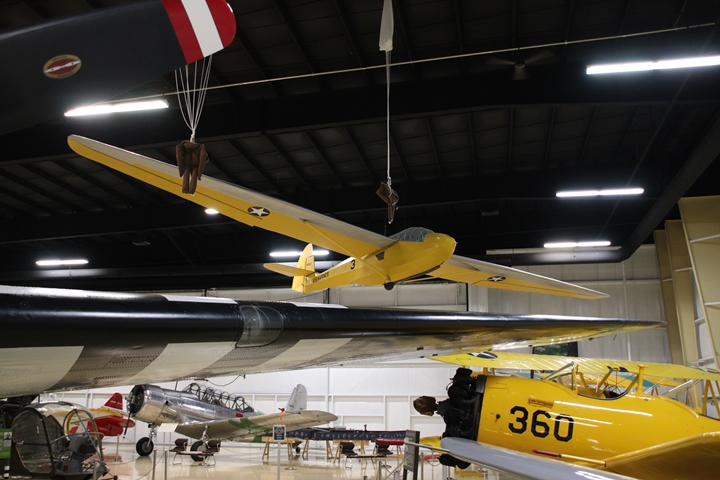
When one walks into the World War Two
section of the Air Zoo Aerospace and Science Museum in Kalamazoo, MI and turns to the
right, this Schweizer LNS-1 can be seen hanging over several naval
training aircraft. This is one of three surviving LNS-1s of the eleven
that were built during World War Two. This one is on loan from the
National Museum of the United States Marine Corps. Two more are on
display in other museums. Author's photo.
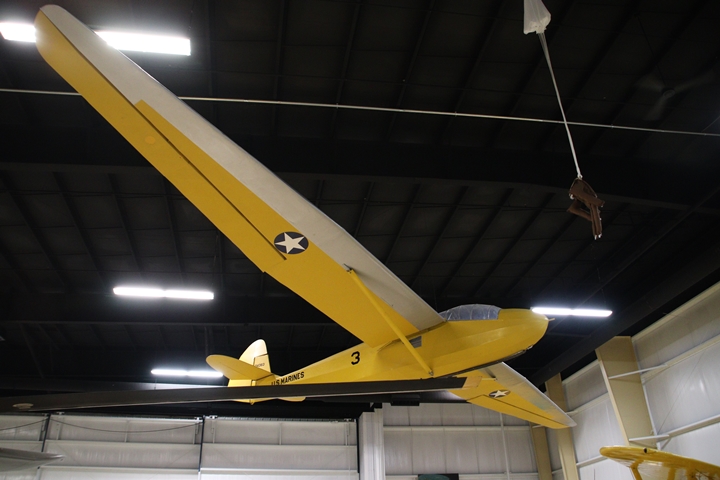
The LNS-1 is similar to the TG-2A.
Author's photo.
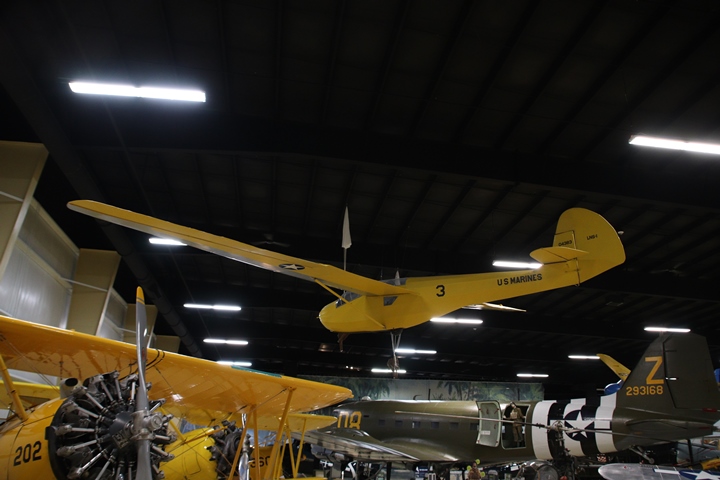
Author's photo.
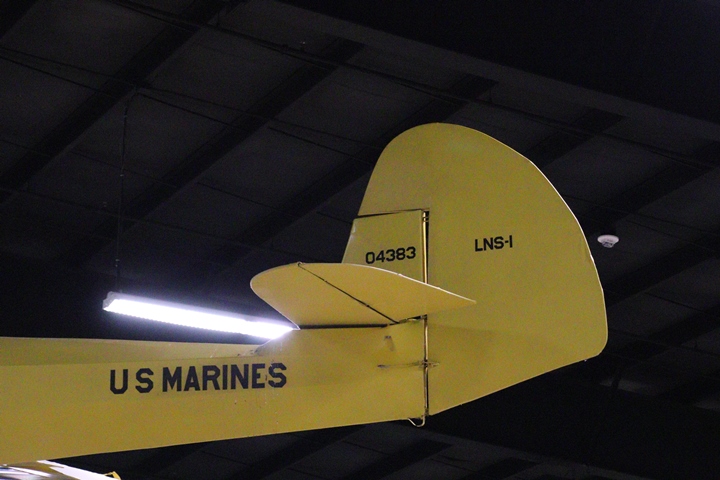
Author's photo.
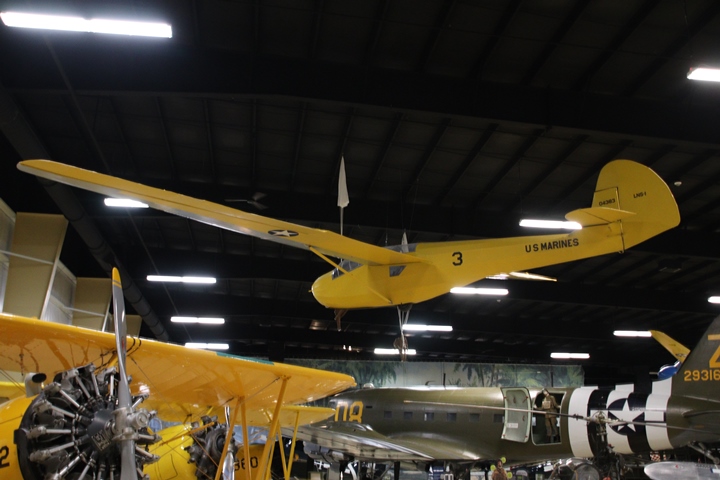
Author's photo.
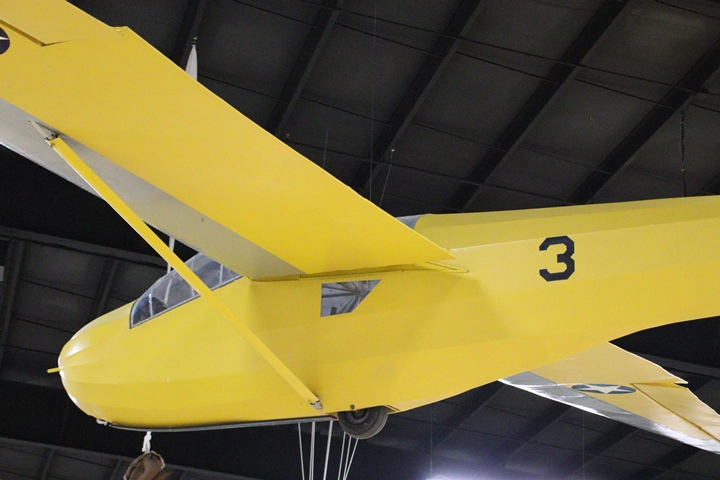
Author's photo.
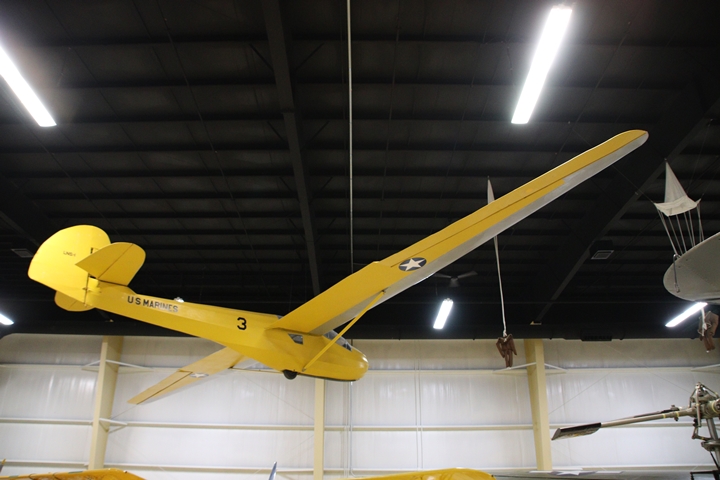
Author's photo.
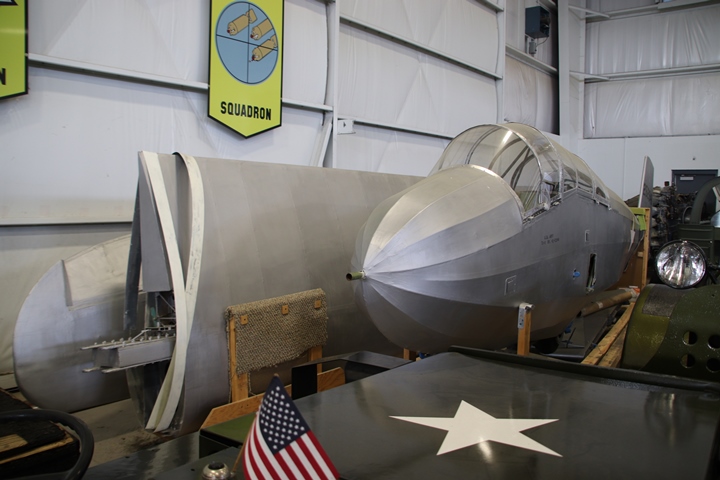
What is this? This is what I asked
myself on a January 2023 visit to the Champaign Aviation Museum in
Urbana, OH. Sitting in the corner and located behind several
pieces equipment was this disassembled glider. I wondered if this
was new to the collection, or I had not noticed it on previous trips to
the museum. Most likely, I had not noticed it before. This
is why I do repeat visits. Author's photo added 3-7-2023.
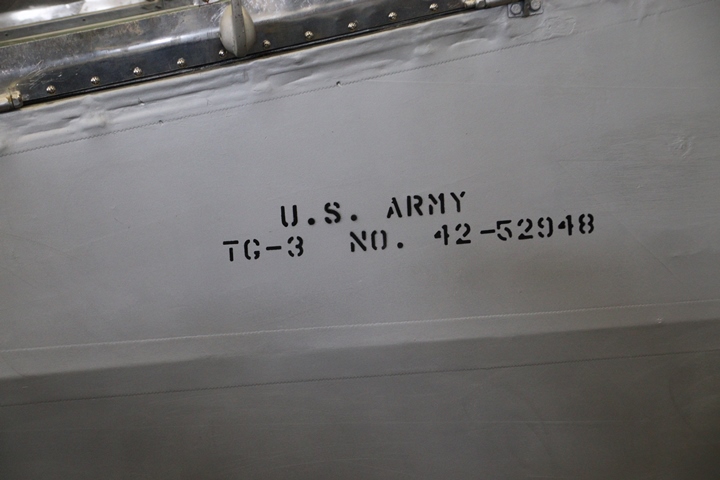
The markings on the glider told me that this
is a Schweizer TG-3. Table 2 shows that serial number 42- 52948
was the 24th TG-3 built in 1942. This is quite a historic
aircraft. Further investigation found that this was sold surplus
after World War Two and was registered as N4808. The registration
expired in February 2006 and the FAA cancelled the registration in
December 2012. Author's photo added 3-7-2023.
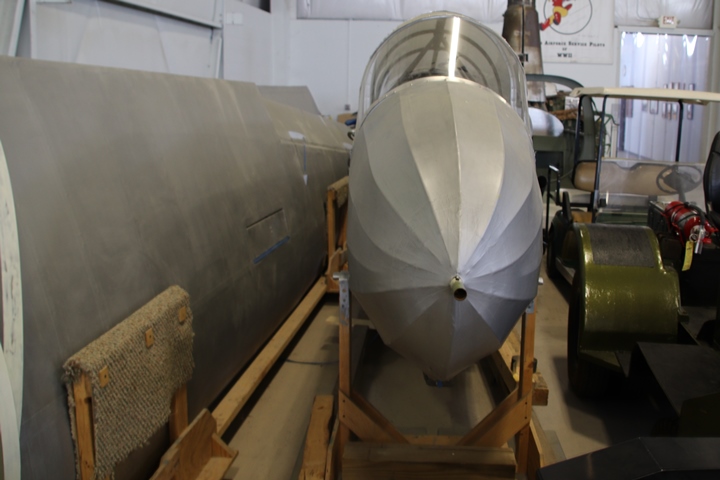
Author's photo added 3-7-2023.
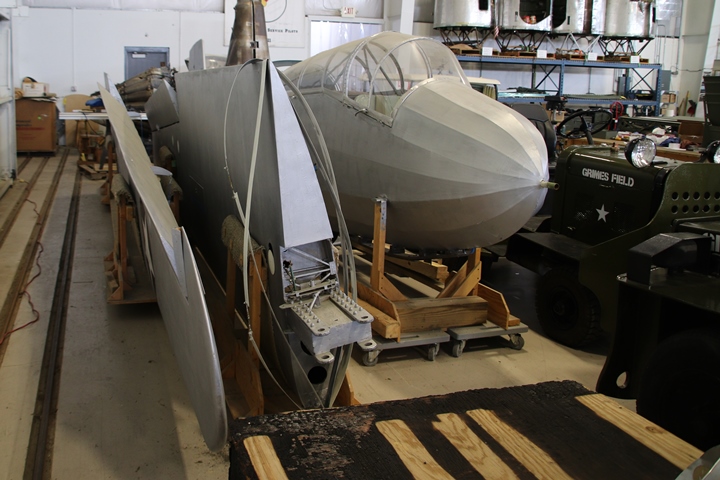
Normally, gliders are hung from the rafters
of museums, which does not allow for closer inspection. This TG-3,
being disassembled and at ground level, allowed for a closer look at the
aircraft. Author's photo added 3-7-2023.
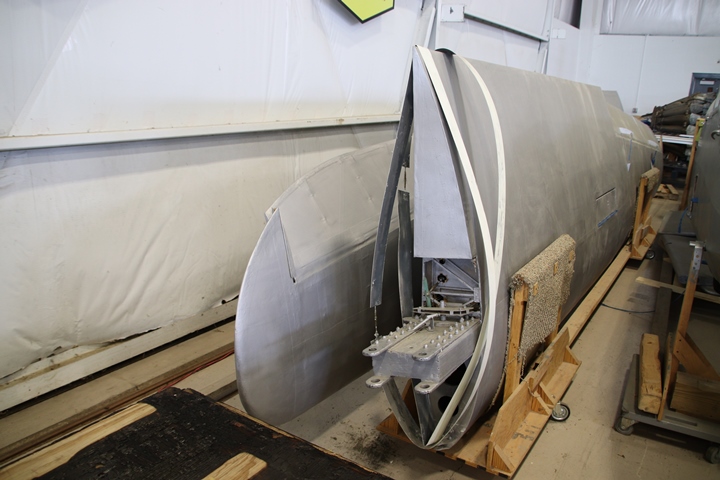
Author's photo added 3-7-2023.
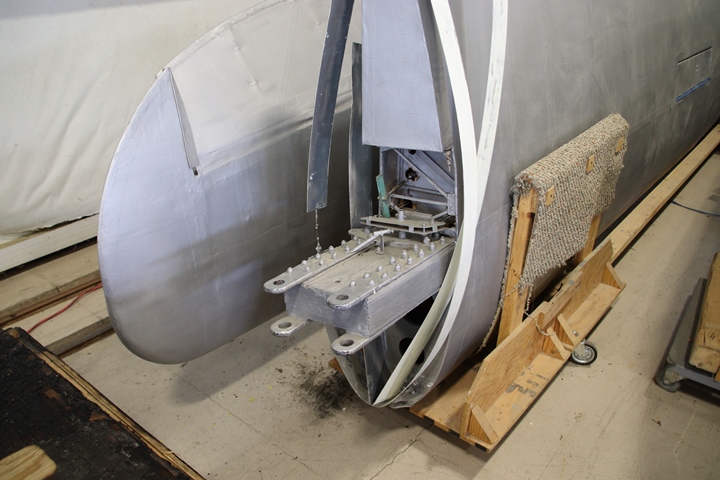
The wing spar appears to be constructed of a
2" by 6." Author's photo added 3-7-2023.
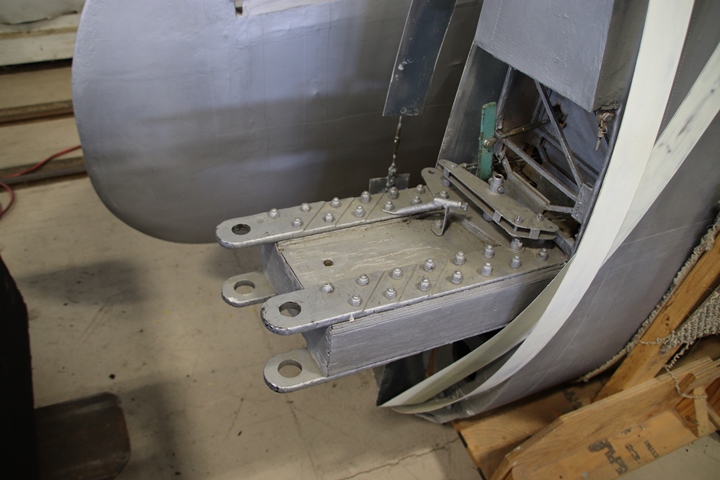
Author's photo added 3-7-2023.
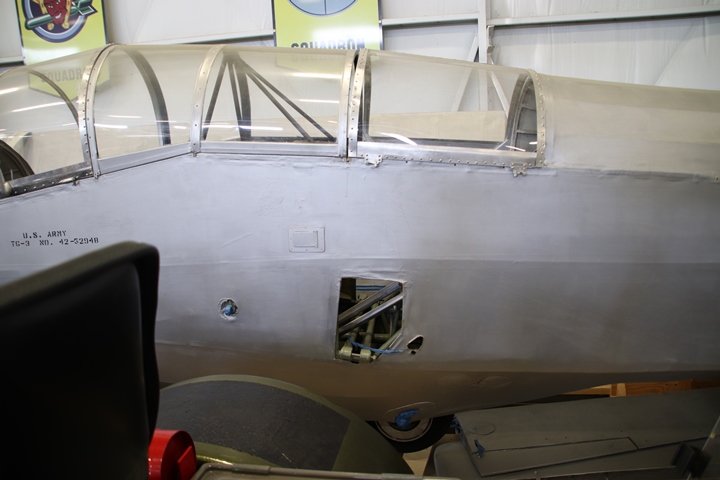
Author's photo added 3-7-2023.
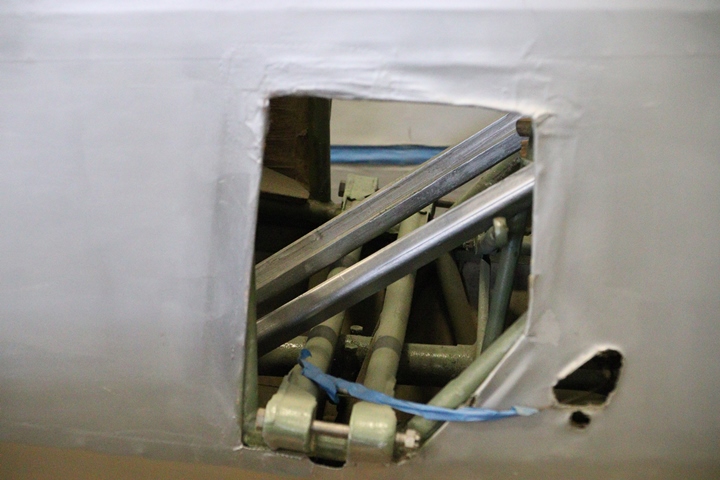
The wing spars apparently attach to this
steel tubing. Author's photo added 3-7-2023.
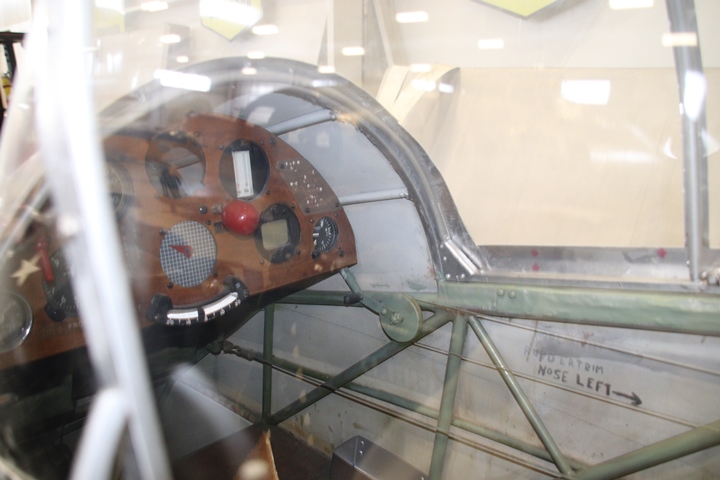
Author's photo added 3-7-2023.
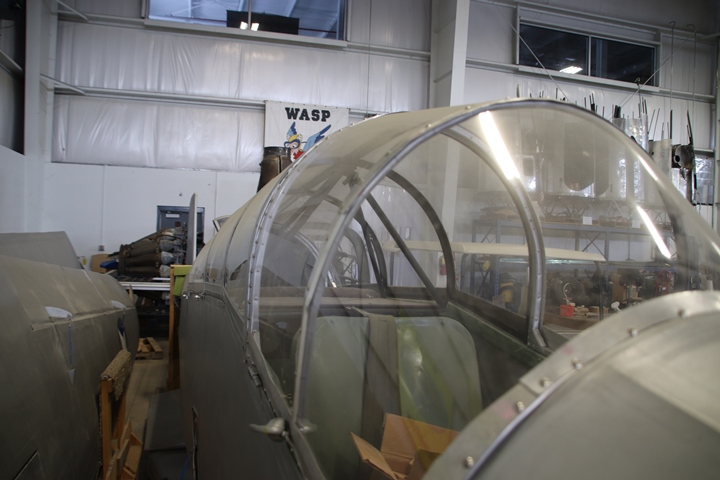
Author's photo added 3-7-2023.
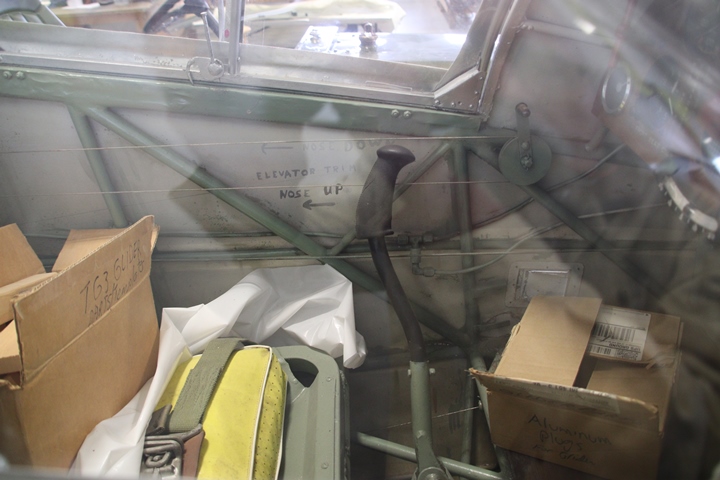
Author's photo added 3-7-2023.
Schweizer Aircraft Corporation World War
Two Subcontracts: When the TG-3A glider contract was
completed in July 1943, the company was able to acquire sub-contracts to keep the company operating.
The TDR-1 Drone Project: The TDR-1
assault drone was developed and built by the Interstate Aircraft and Engineering
Corporation of El Segundo, CA.
The American Aviation Corporation of Jamestown, NY was awarded U.S. Navy
contract to build the TDR-1 under license. American
Aviation Corporation subcontracted Schweizer to fabricate fifty wing
center sections which included the engine mounts and canopies.
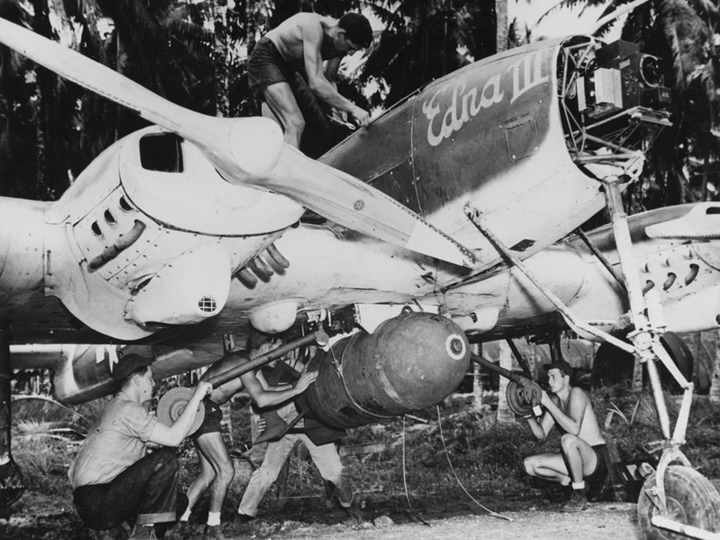
Image added 3-7-2023.
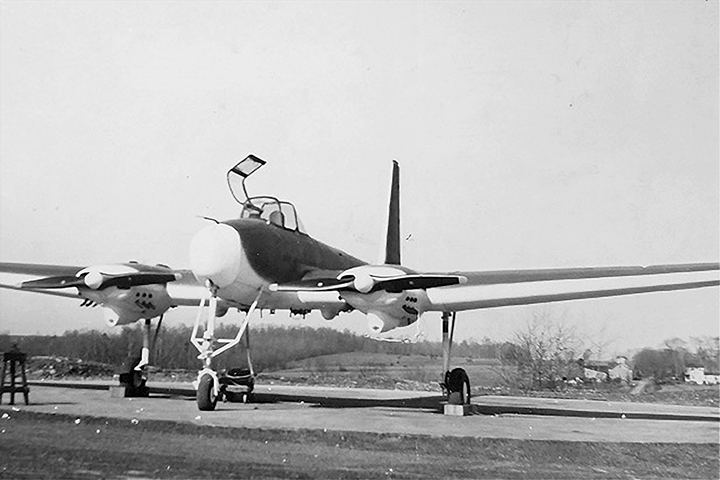
While the TDR was a drone, it had provisions
to be flown by a pilot. Image added 3-7-2023.
Curtiss C-46:
Sixty percent of the subcontracting work
that Schweizer did during World War Two was for the Curtiss C-46.
The company was contracted to build 700 fuselage under wing sections.
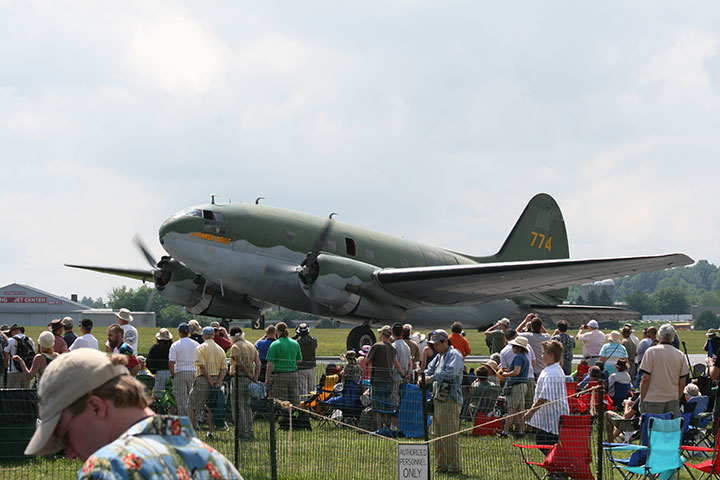
Author's photo added 3-7-2023.
Sikorsky R-6 Helicopter:
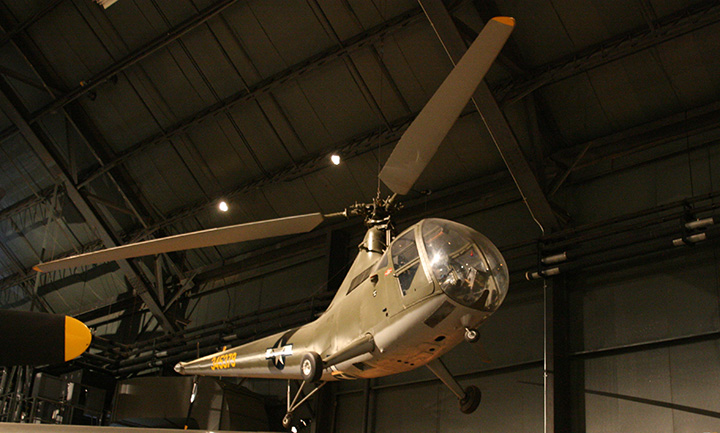
The
Franklin engine in this Sikorsky R-6 was built by Aircooled Motors of Syracuse, NY.
Schweizer was contracted by Aircooled to build the engine housing and
external cooling system. Author's photo added 3-7-2023.
Republic P-47:
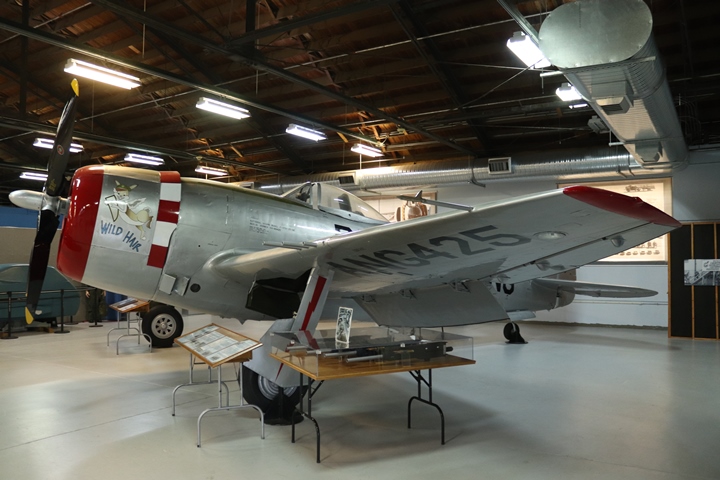
Schweizer also built weld assemblies for the
Republic P-47s built in Farmingdale, NY. Author's photo added
3-7-2023.
The Schweizer Aircraft Corporation Plant:
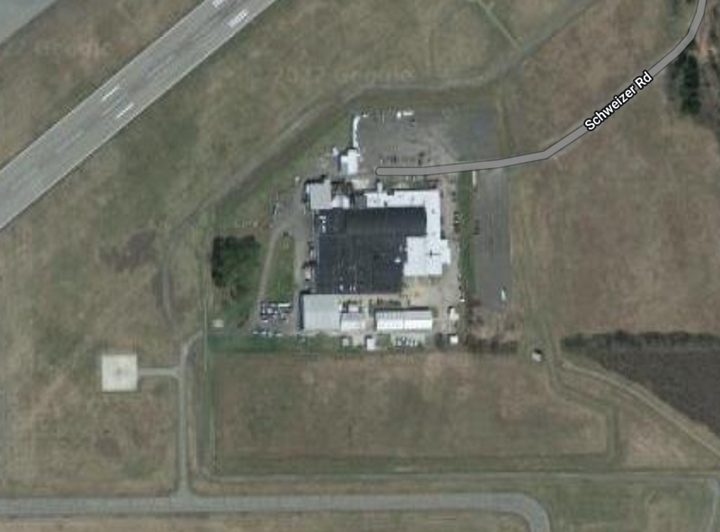
This Google Maps photo shows the former
Schweizer factory at the Elmira-Corning Airport in Big Flats, NY.
I flew in and out of this airport in early 1973 for a job interview with
Corning Glass. Image added 8-10-2022.
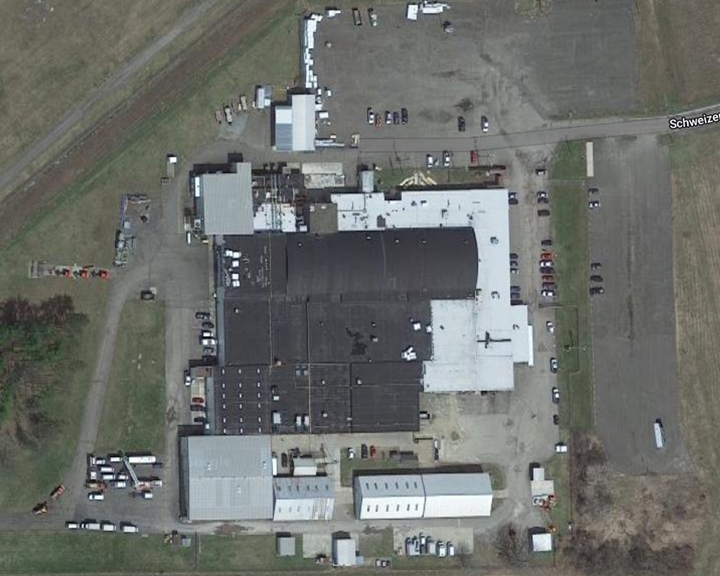
This enlargement shows that the factory has
been repurposed with new occupants as there are vehicles in the parking
lot. Image added 8-10-2022.

This Google Maps street view shows the
factory from Schweizer Road. Image added 8-10-2022.
Schweizer Aircraft Corporation Post World
War Two-Era Products: While the Schweizer brothers formed the
Schweizer Aircraft Corporation to build gliders, they soon learned that
manufacturing gliders was not going to keep the company in business.
There was just not enough demand for this type of product. After
World War Two, two different aviation products, designed by other
companies, were instrumental in keeping Schweizer in business.
These were the Grumman Ag-Cat and the Hughes TH-55 helicopter.
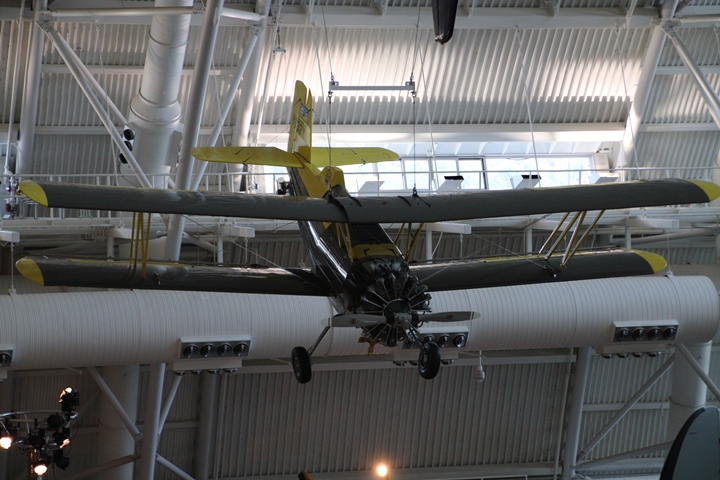
In 1967 the company began building the
Grumman Ag-Cat under license. This example is on display at the
Udvar-Hazy Center. Author's photo added 3-7-2023.
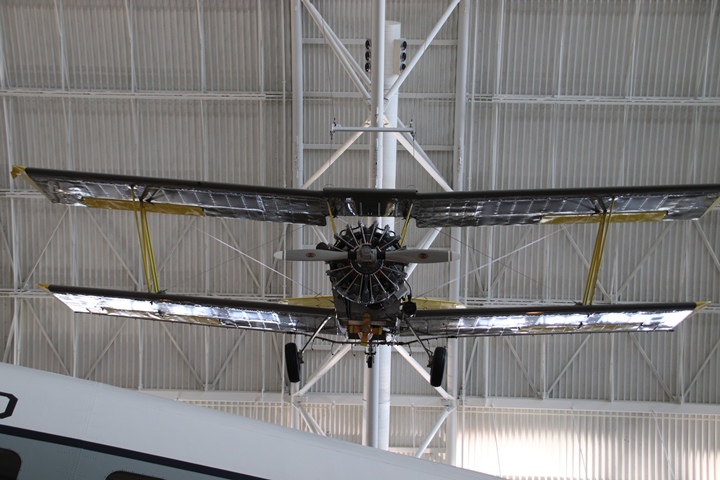
Author's photo added 3-7-2023.
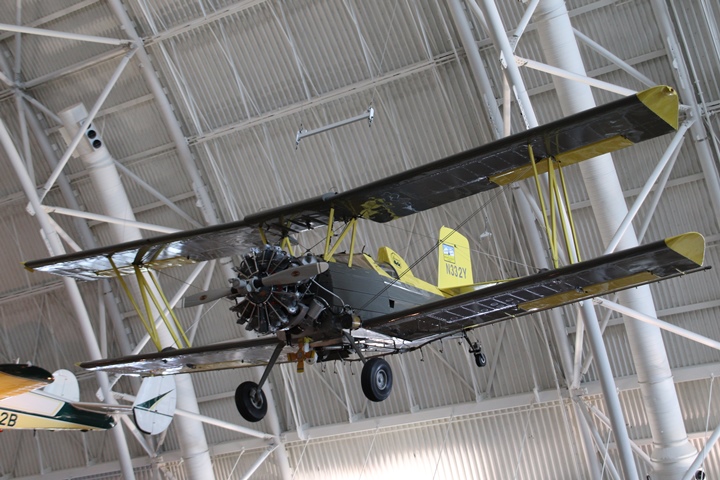
Author's photo added 3-7-2023.
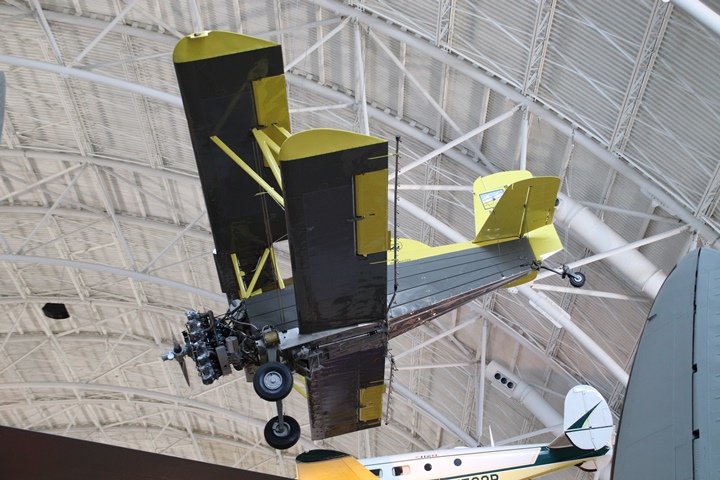
Author's photo added 3-7-2023.
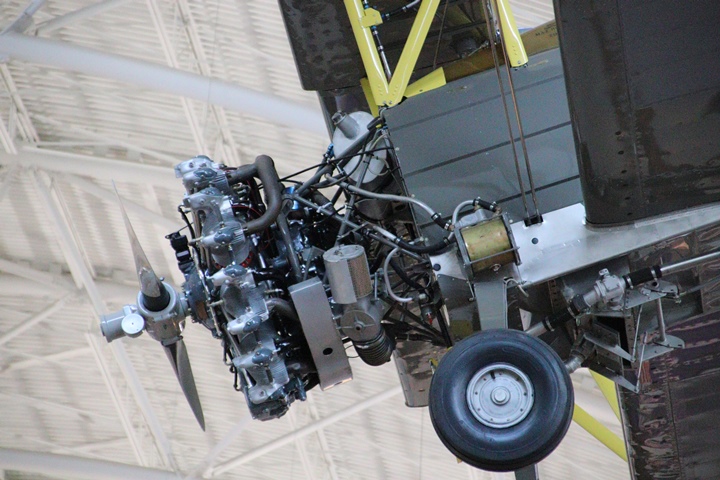
Author's photo added 3-7-2023.
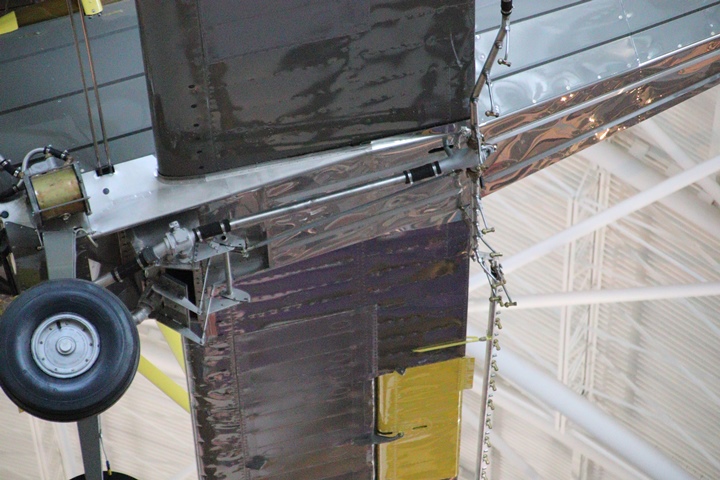
Author's photo added 3-7-2023.
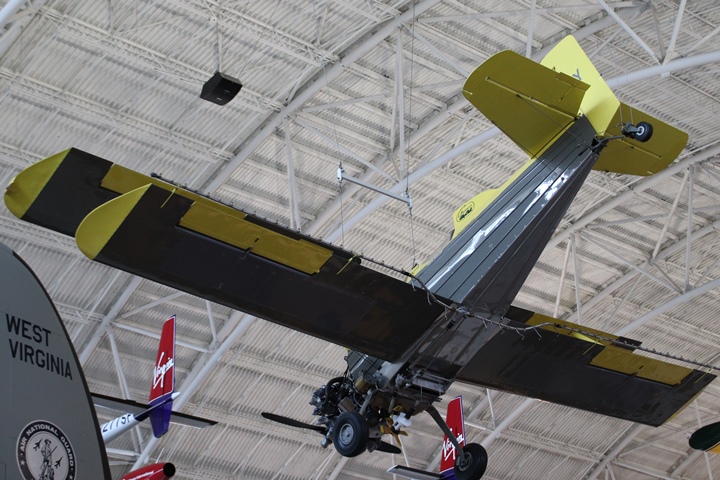
Author's photo added 3-7-2023.
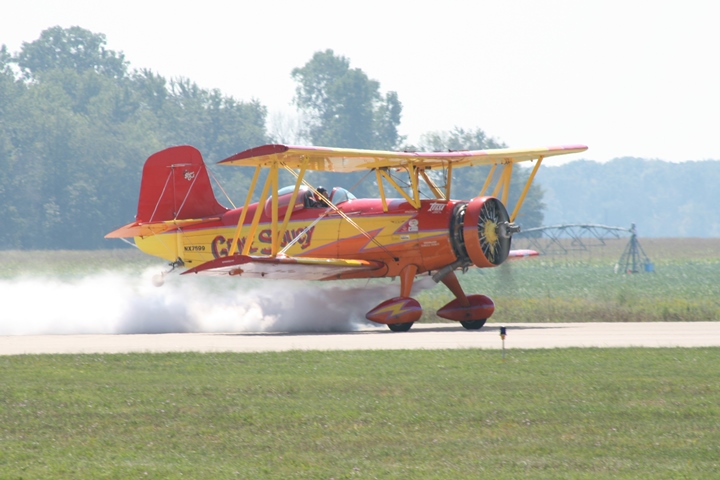
Gene Soucy converted this 1972 Schweizer-built
Ag-Cat serial number 1004 into a "Show-Cat." It is seen here at the
2012 Gratiot Community Airshow. Author's photo added 8-10-2022.
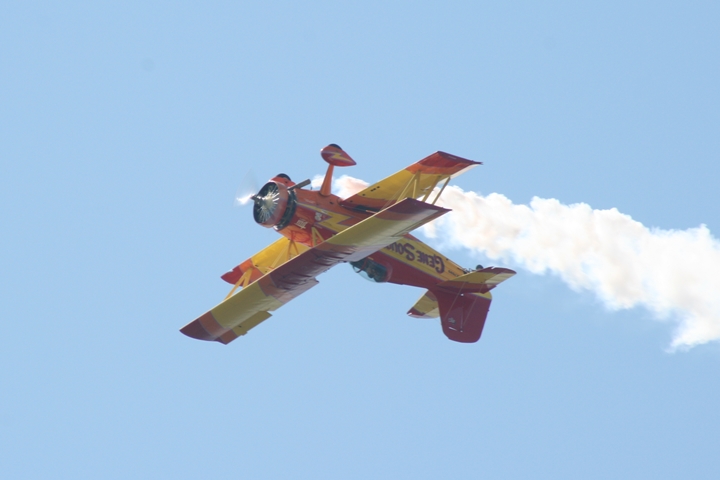
This image shows the "Show-Cat" performing
at the 2019 Wings over Wayne Airshow at Seymour Johnson AFB, NC. Author's photo
added 8-10-2022.
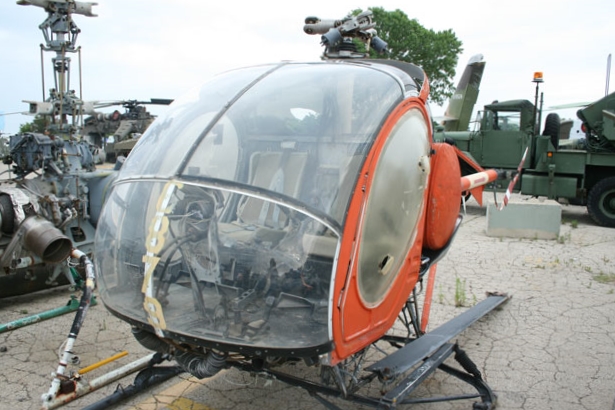
This TH-55 may have been built by Schweizer
after 1983. It is the military version of the Schweizer-Hughes
Model 300. The orange paint scheme indicates it was a military
trainer. Author's photo added 8-10-2022.
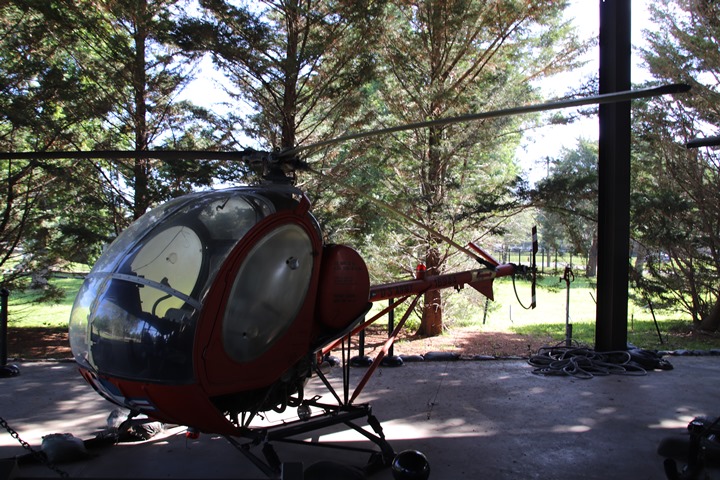
This TH-55 is on display at the Army
Transportation Museum at Fort Eustis, VA. Author's photo added
3-7-2023.
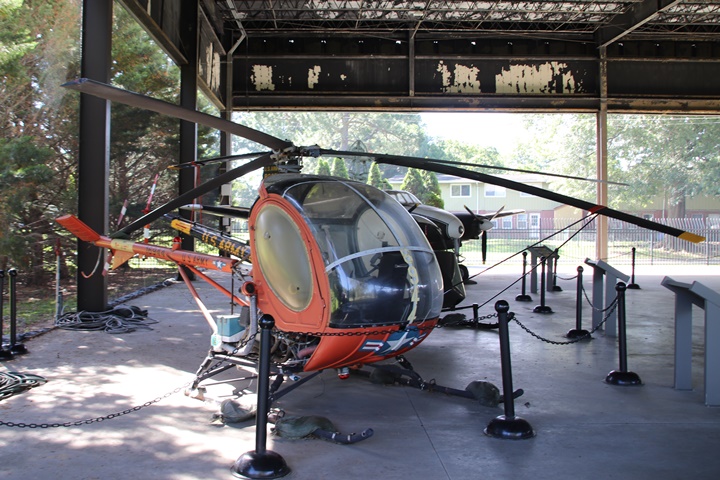
Author's photo added 3-7-2023.
|







































